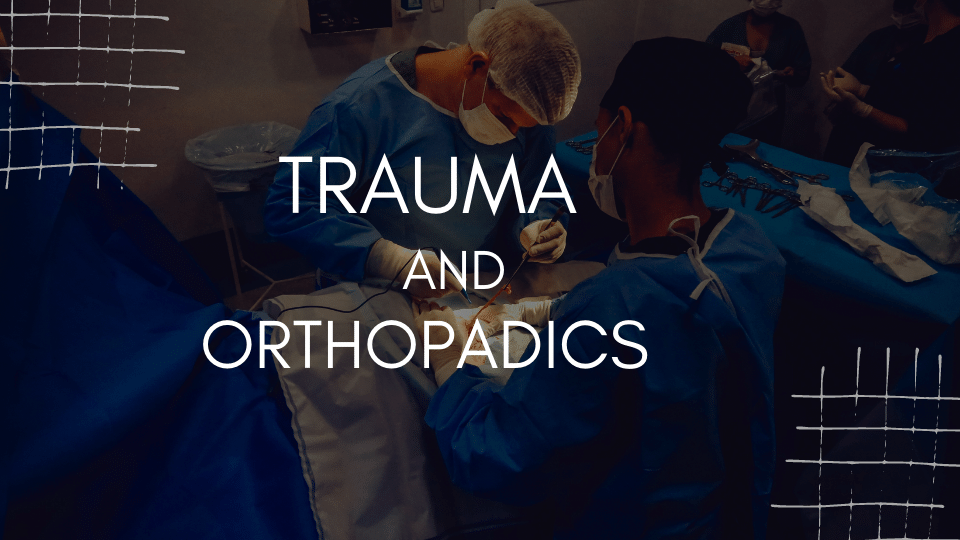Introduction
Trauma and orthopaedics is a medical speciality that deals with the prevention, diagnosis, treatment, and rehabilitation of injuries and disorders of the musculoskeletal system. This system includes bones, joints, ligaments, tendons, muscles, and nerves that provide structure, support, and movement to the human body. Trauma and orthopaedic surgeons use surgical and non-surgical methods to manage a range of conditions that affect the musculoskeletal system, from fractures and dislocations to arthritis and spinal deformities.
Types of Injuries and Disorders in Trauma and Orthopaedics
Trauma and orthopaedic conditions can be classified into three broad categories: traumatic injuries, degenerative disorders, and congenital abnormalities. Traumatic injuries are caused by accidents, falls, sports injuries, and other types of trauma that result in fractures, dislocations, sprains, strains, and soft tissue injuries. Degenerative disorders are the result of wear and tear on the musculoskeletal system over time, leading to conditions such as osteoarthritis, rheumatoid arthritis, and degenerative disc disease. Congenital abnormalities are present at birth and may affect the development and function of the musculoskeletal system, such as clubfoot, scoliosis, and hip dysplasia.
Diagnosis and Treatment in Trauma and Orthopaedics
The diagnosis of trauma and orthopaedic conditions typically involves a physical examination, medical history review, imaging tests, and laboratory tests. Based on the diagnosis, the treatment plan may involve non-surgical or surgical methods. Non-surgical treatments include physical therapy, pain management, medication, and immobilization with casts, braces, or splints. Surgical treatments may involve open or minimally invasive procedures, such as joint replacement, fracture fixation, ligament repair, and spinal fusion.
Trauma and Orthopaedic Surgery
Trauma and orthopaedic surgery is a complex and challenging field that requires specialized training and expertise. Surgeons must have a deep understanding of anatomy, biomechanics, and physiology, as well as a mastery of surgical techniques and technologies. They must also be able to manage complex medical conditions and complications, such as infections, blood loss, and nerve damage. Trauma and orthopaedic surgeons work in a variety of settings, including hospitals, clinics, and outpatient surgery centres.
Joint Replacement Surgery
Joint replacement surgery is one of the most common types of orthopaedic surgery, particularly in older adults with osteoarthritis or rheumatoid arthritis. This surgery involves replacing a damaged or diseased joint, such as the hip or knee, with a prosthetic joint made of metal, plastic, or ceramic materials. Joint replacement surgery can relieve pain, improve mobility, and enhance quality of life for many patients.

Fracture Fixation Surgery
Fracture fixation surgery is another common type of orthopaedic surgery, particularly in younger patients with traumatic injuries. This surgery involves realigning and stabilizing a broken bone with screws, plates, rods, or wires. Fracture fixation surgery stabilizes the broken bone, prevents damage to tissues, promotes healing, and restores limb function.
Spinal Surgery
Spinal surgery diagnoses and treats spinal disorders, such as herniated discs, stenosis, and deformities, through specialized techniques. It may involve decompression, fusion, or motion preservation techniques, depending on the type and severity of the condition. Spinal surgery can help relieve pain, improve mobility, and prevent further neurological damage.
Rehabilitation in Trauma and Orthopaedics
Rehabilitation is an important part of the treatment process in trauma and orthopaedics. After surgery or injury, patients may require rehabilitation to regain strength, mobility, and function. This may involve physical therapy, occupational therapy, and other types of specialized care. Rehabilitation can help patients recover faster and more completely, reducing the risk of complications and long-term disability.
Prevention in Trauma and Orthopaedics
Prevention is an important aspect of trauma and orthopaedic care.
Healthy lifestyle choices like exercise, diet, and avoiding smoking and excessive drinking can prevent or reduce musculoskeletal conditions.
Preventative measures include wearing protective gear, taking breaks, and maintaining good posture to avoid injuries during high-risk activities.
FAQs
What is trauma and orthopaedic care?
Trauma and orthopedic care is a medical specialty that manages injuries and disorders of the musculoskeletal system, which includes bones, joints, muscles, and connective tissues
What types of conditions are treated by trauma and orthopaedic surgeons?
Trauma and orthopedic surgeons treat a wide range of conditions, including fractures, dislocations, sprains, strains, arthritis, spinal deformities, and sports injuries.
What are some common treatments for musculoskeletal conditions?
Common treatments for musculoskeletal conditions may include medication, physical therapy, injections, braces, casts, or surgery, depending on the severity and nature of the condition.
How can patients prevent musculoskeletal injuries or conditions?
Patients can prevent musculoskeletal injuries or conditions by maintaining a healthy lifestyle, practicing good body mechanics, wearing protective gear during high-risk activities, and seeking medical attention promptly if they experience pain or discomfort.
Conclusion
Trauma and orthopaedics is a vital medical speciality that plays a crucial role in managing injuries and disorders of the musculoskeletal system. From fractures and dislocations to arthritis and spinal deformities, trauma and orthopaedic surgeons use surgical and non-surgical methods to help patients regain their mobility, function, and quality of life. Through prevention, diagnosis, treatment, and rehabilitation, trauma and orthopaedic care can make a significant difference in the lives of patients of all ages and backgrounds.


